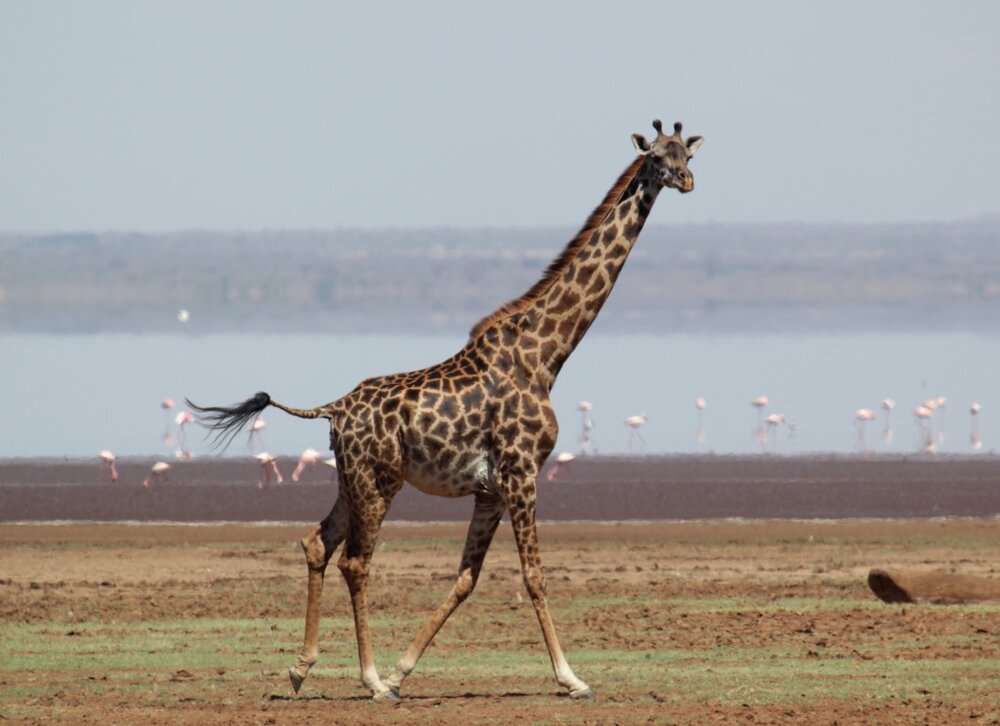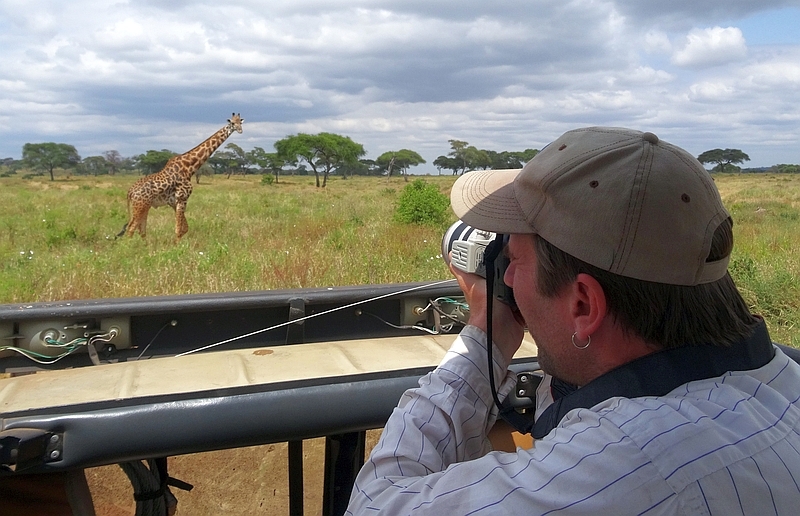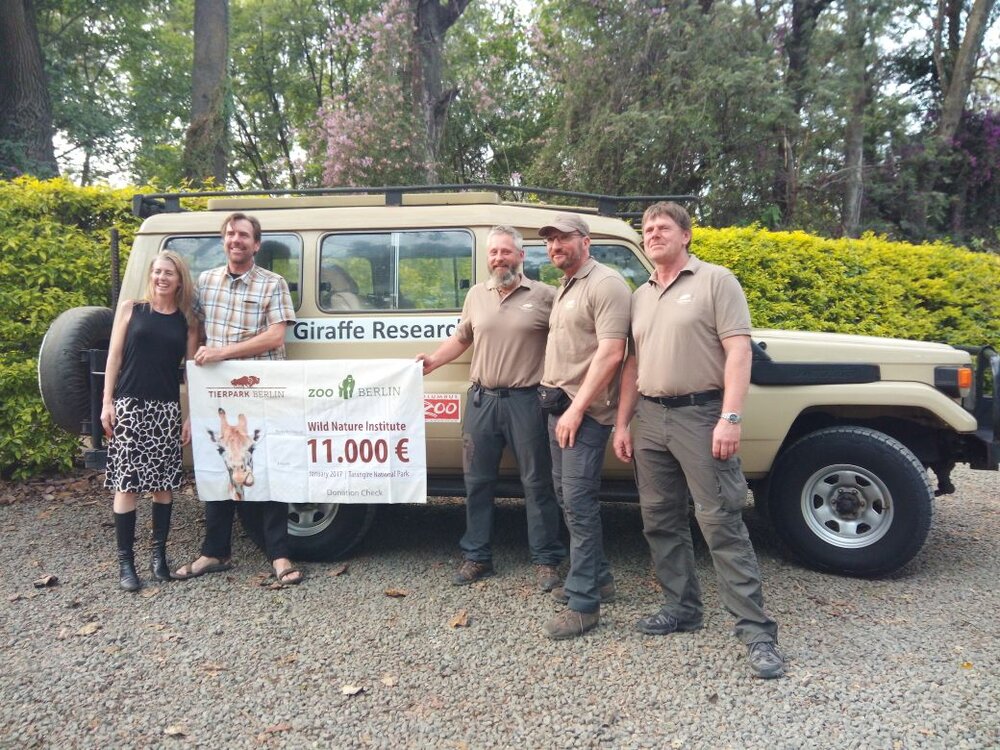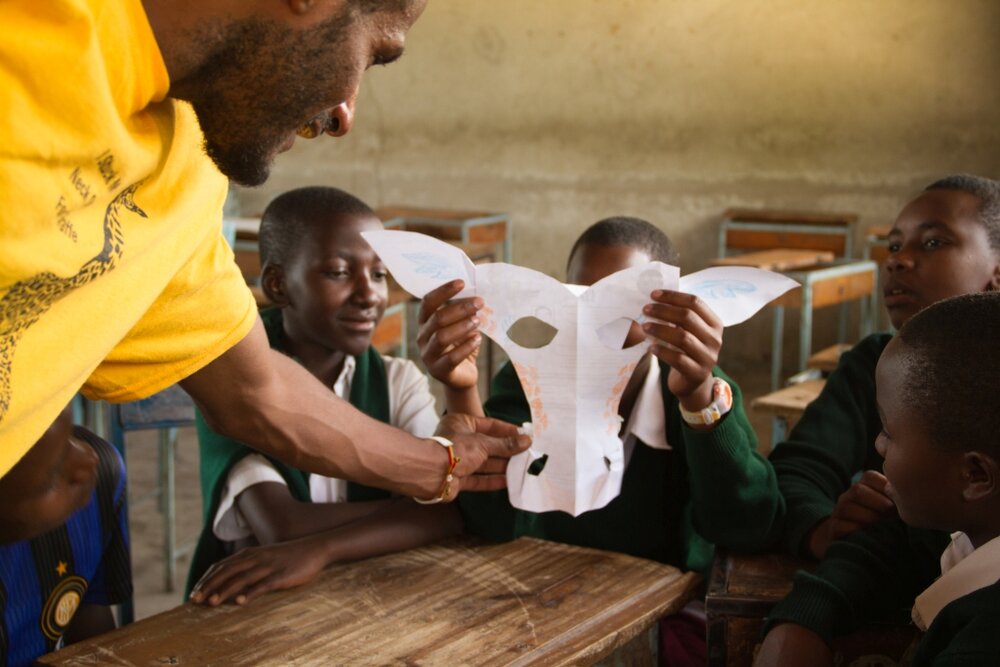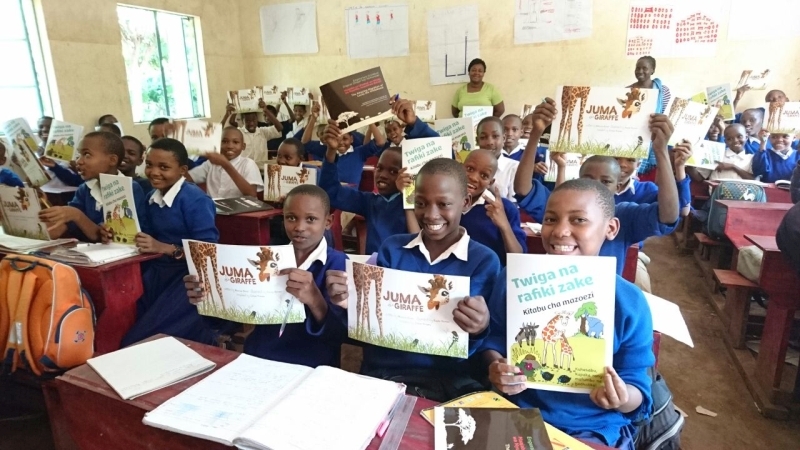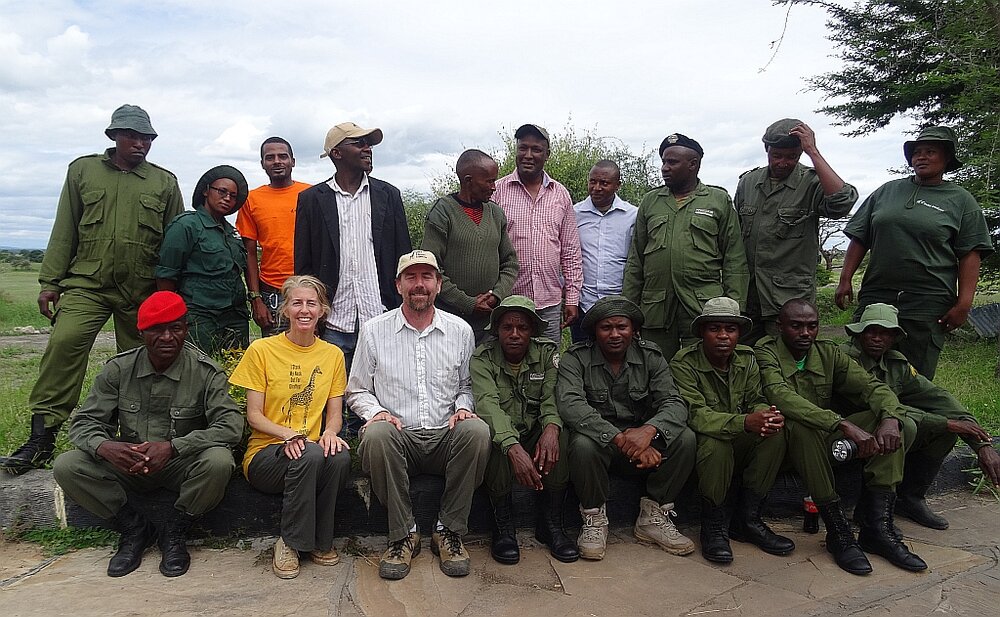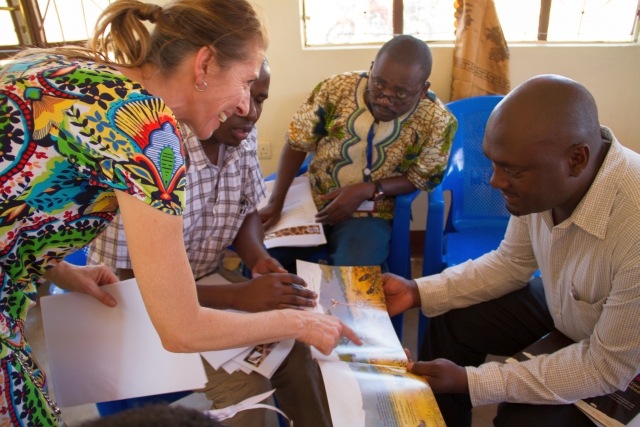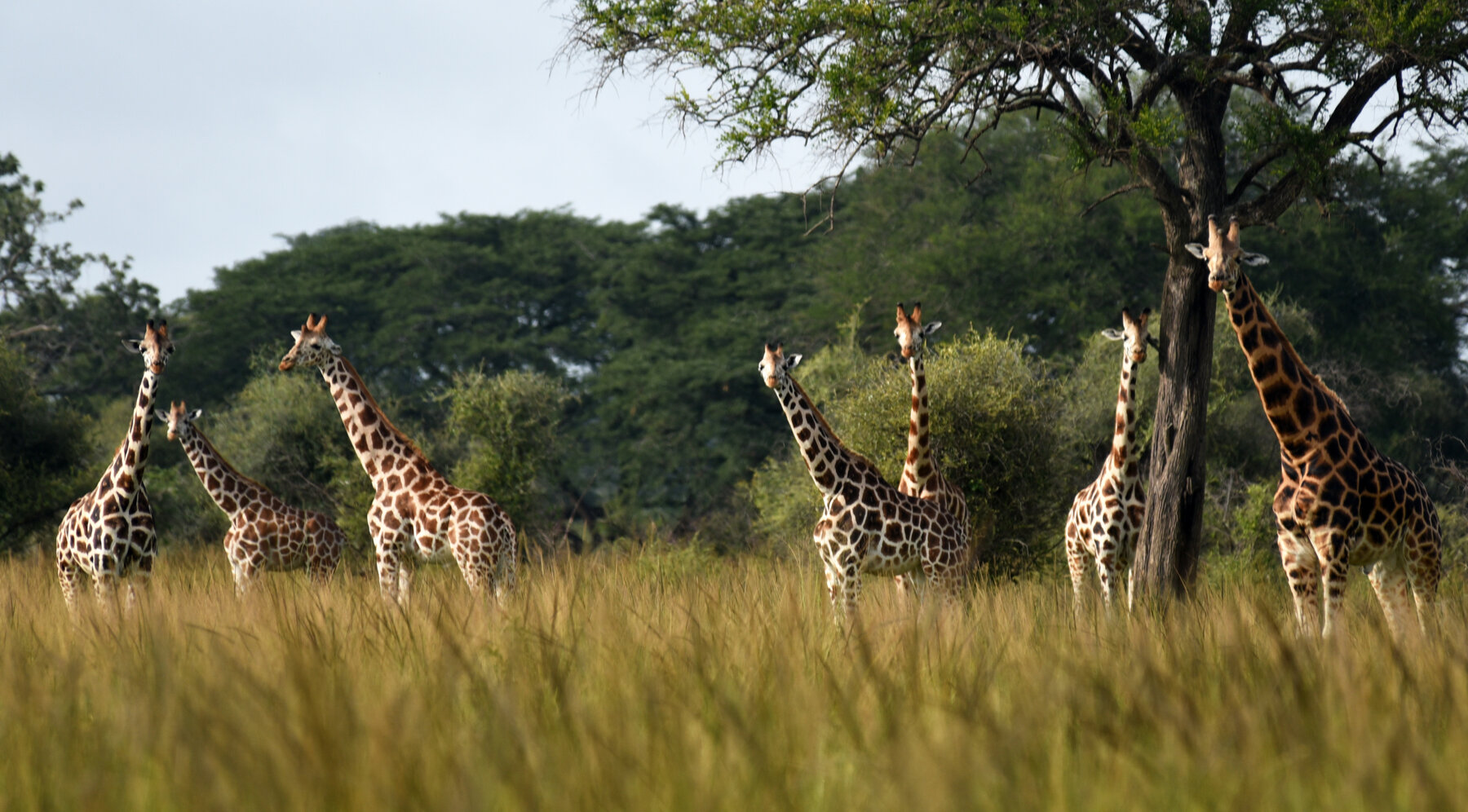
Giraffe
Zoo and Tierpark Berlin are helping to protect giraffes in Tanzania.
Project facts
- Project partner
Wild Nature Institute
- Species
Giraffe (Giraffa camelopardalis)
- IUCN threatened status
Vulnerable (VU)
- Project location
Tanzania
- Greatest threat
Poaching; loss and fragmentation of habitat
- Response
Studying demographic developments of giraffe populations in order to designate suitable conservation areas; educating local populations; supporting anti-poaching units
Threat Categories of IUCN


Long-necked Berliners
Berlin has a long and successful track record as a home to the world’s tallest living animal. Zoo Berlin’s first giraffe arrived back in 1864, and in 1872 the zoo erected a magnificent building for these exotic creatures. To this day, the Giraffe House remains one of Zoo Berlin’s most recognisable landmarks. The Tierpark has housed the leggy African mammals since 1960. Its first baby giraffe, named Bummi, was born in 1968.
Striding across the savannah
Giraffes are at home in the African savannah and were once found across the continent. Now, the majestic ruminants live only in isolated areas of sub-Saharan Africa. The giraffe has been designated a threatened species since 2016; in the past 30 years, numbers have declined by almost 40 percent. Today, giraffes are barely found outside of national parks, and even designated reserves do not offer reliable protection. The degree of threat differs among the nine different giraffe subspecies, however. Four subspecies are actually growing in number, one remains stable, and the remaining four have declined by as much as 97 percent.
Pushed out by people
The biggest threat facing giraffes is the loss of their natural habitat. This is mainly due to the rapidly increasing human populations, who need ever greater amounts of firewood, food and water. When trees are chopped down, the giraffes lose their main food source – leaves. The intensified use of land for agriculture is also reducing the amount of available habitat. Climate change plays a role, too, as prolonged droughts drive more and more people to remote areas in search of an adequate water supply. This climate migration places people and animals in direct competition for water.
Big game
Giraffes are also under a huge threat from poachers, who are undeterred by the boundaries of conservation areas. Unlike the rhinoceros, which is hunted for its horn, giraffes are predominantly killed for their meat. In many African countries racked by political instability, countless people live in poverty. It is difficult for these people to get enough food, so naturally a giraffe is a very welcome source of meat. Bringing down just one animal can keep a family fed for a long time, and the remaining meat can be sold for good money.
Tanzania’s national animal in danger
One particularly threatened subspecies of giraffe is the Masai giraffe – Tanzania’s national animal. It is found throughout southern Kenya as well as in Tanzania. Over the past three decades, this giraffe’s numbers have plummeted by over 50 percent. The Wild Nature Institute is focusing on protecting and linking up areas in Tanzania’s Tarangire ecosystem that are important for the Masai giraffes. This project was initiated in 2012 and focuses on three main areas of activity: research, education and anti-poaching efforts.
Identifying solutions
With the support of the University of Zurich, the Wild Nature Institute is involved in one of the world’s biggest studies of mammals, investigating the impact of habitat fragmentation on giraffes. The long-term study is recording the births, deaths and movements of more than 4,000 individual giraffes. A modern computer program recognises each animal’s unique fur pattern from photographs, enabling the project to closely monitor the demographic development of the giraffe population over an area of 1,500 km². The findings of the study will enable experts to recommend the most effective conservation action to be taken for these giraffes and others.
Partnering with kids and rangers
The Wild Nature Institute has also initiated an environmental education programme to make children aware of the threat facing giraffes. Various learning materials have been designed and distributed among more than 30,000 schoolchildren. Teachers have also been trained on how to incorporate the materials into their lesson plans. In addition, the Wild Nature Institute supports the PAMS Foundation rangers in their fight against poaching. The effectiveness of the patrols is scientifically monitored and evaluated in order to maximise the impact of the rangers’ work.
Berlin to the rescue!
Berlin’s zoos have been supporting this project since 2017. The funds are used to purchase the vehicles required for conducting research and to pay a local research assistant. The money also goes towards printing and distributing additional educational material and organising more teacher training sessions.
Photos: © Wild Nature Institute
